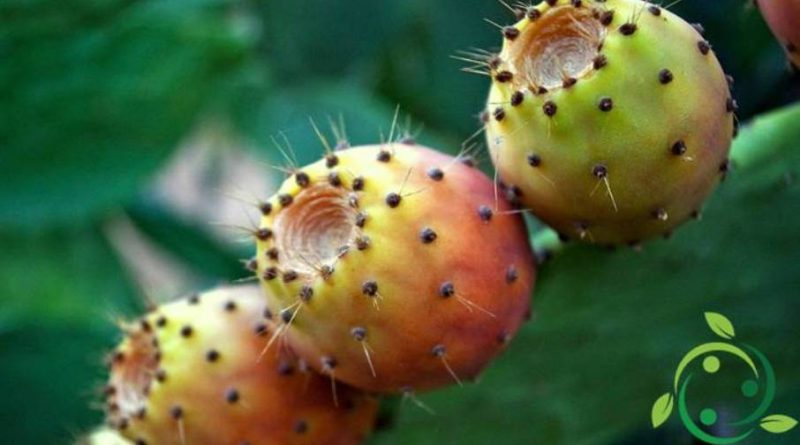Indian fig from the Belice Valley
Indian fig from the Belice Valley
The prickly pear cactus of the Belice Valley (Opuntia ficus-indica (L.) Mill., 1768) is a typical product (PAT) cultivated in the valley of the Belice river in Sicily.
Origins and History –
The “prickly pear of the Belice valley” is a product that the Ministry of Agricultural, Food and Forestry Policies has included in the list of Traditional Agri-food Products of the Sicily region (PAT).
The origins of Opuntia ficus are to be found in the 16th century, when it was imported from central-southern America to Sicily where it found an ideal habitat and developed to the present day. In fact, Fico d’India has a lot of resistance: this allowed it to settle quickly and grow even in dry, sandy or volcanic soils. The spontaneous vegetation of the plants of this tasty southern fruit, has meant that the Sicilian nobles have always seen the Fico dʻIndia as a fruit for “poor” and not for elite: the only mediocrity always loved by Sicilians. The Fico d’India is also a distinctive sign of the wild vegetation in Sicily.
This plant is therefore present, as well as in much of Sicily, in the territory of the Valle del Belice where it was once kept in marginal areas and also used for animal feed. In the last decades cultivation has been rationalized with plants with a regular layout and with the use or not of irrigation water.
Geographic area –
The “prickly pear of the Belice valley” is cultivated in the province of Agrigento near the Belice river, especially in the Municipality of Santa Margherita di Belice where the characteristic “shovel” plants give a beautiful suggestion to the landscape.
Raw material –
The prickly pear from the Belice valley is characterized by a particularly juicy and sweet fruit. The cultivation technique allows, even in dry conditions, to store a large dose of water and thus overcome unfavorable seasons.
There are actually three cultivars that differ in the color of the fruit: yellow (Sulfarin), white (Muscaredda) and red (Sanguigna). The Sulfarina cultivar is the most widespread due to its greater production capacity and good adaptability to intensive cultivation methods. In general, however, there is a tendency to integrate the cultivation of the three cultivars, in order to supply the market with a product characterized by chromatic variety.
The seeds contained in the pulp are characteristic of this fruit.
The weight can vary from 100 to 400 gr.
Description –
IL Fico dʻIndia is a succulent plant, better a succulent plant, due to its great ability to accumulate water inside, which can reach 3-5 m in height. Prickly pear has great resistance to drought.
It has an arborescent shape and the ramifications are represented by shovels, of flattened and oval shape.
The fruit is a fleshy berry with numerous seeds, whose weight can vary from 100 to 400 g.
Production Mode –
The prickly pear cactus of Valle del Belice is produced through a cultivation phase that passes through some stages to obtain, in the autumn, a sweet and succulent fruit.
The cultivations can be both in irrigation and in dry, in mainly loose soils, rich in iron.
The propagation is carried out by cuttings, it is prepared by cutting longitudinally into two parts blades of one or two years, which are left to dry for a few days and then placed in the ground, where they are easily rooted. Pruning is performed in spring or late summer to prevent contact between the blades and to eliminate malformed or damaged blades.
In May-June the “scottolatura” is carried out, that is the cut of the flowers of the first flowering, so as to obtain a second flowering, more abundant, with a more delayed maturation, in autumn. On the basis of this custom, the fruits that mature as early as August, so-called Augustans, of small dimensions, and the late or bastardoni, larger and more succulent, arriving on the market in autumn are distinguished.
The production of the Augustines does not need irrigation, which is instead required for the production of bastardoni.
In irrigated cultivation a yield of 250-300 quintals of fruit per hectare can be obtained.
Gastronomic Use –
The prickly pears, besides being eaten fresh, with a particular procedure to remove thorns and external pulp, can be used for the production of juices, liqueurs, jellies, jams, sweeteners and other; but also the blades can be eaten fresh, in brine, pickled, candied, in the form of jam.
In folk medicine the fruits are considered astringent; due to their richness in vitamin C they have been used in the past by sailors for the prevention of scurvy.
The decoction of flowers has diuretic properties. The young blades, heated in the oven, are used as emollients, applied in the form of a poultice.
Guido Bissanti
Sources
– National list of traditional food products, of the Ministry of agricultural food, forestry and tourism policies, pursuant to art. 12, paragraph 1, of the law of 12 December 2016, n. 238 and ss.mm.ii.
– Wikipedia, the free encyclopedia.

